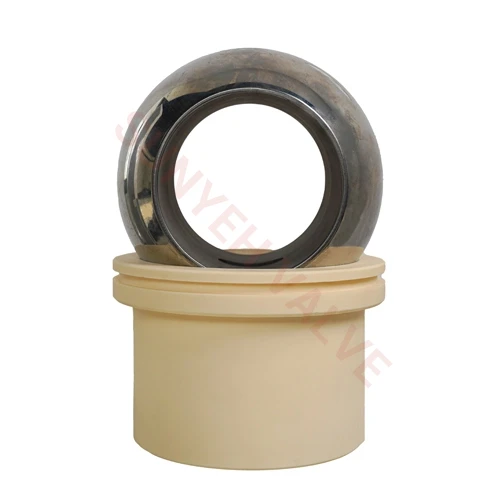Ceramic lined valves for on-off are widely used in various industrial applications due to their outstanding resistance to wear, corrosion, and high temperatures. Ceramic lined valves for on-off are particularly suitable for handling media containing hard particles, corrosive substances, or high-temperature fluids. Here are some specific operational scenarios:
Highly Abrasive Media: Ceramic lined valves for on-off are suitable for media with a high concentration of solid particles and abrasive materials, such as coal washing, ore beneficiation, construction, petrochemicals, food, cement, and sewage sectors.
Corrosive Media: When dealing with acidic, alkaline, or saline chemicals, ceramic lined valves for on-off provide excellent protection against corrosion of the ceramic lined valve's metal components.
High Temperature Conditions: Ceramic lined valves for on-off can withstand high-temperature steam and other hot fluids, making them suitable for environments like thermal power plants and nuclear power stations.
High Pressure Conditions: Some ceramic lined valves for on-off are designed to withstand higher operating pressures, suitable for high-pressure pipeline systems.
Special Conditions: Ceramic lined valves for on-off are also used in special conditions such as desulfurization, denitrification, and wastewater treatment, where exceptional wear and corrosion resistance of the ceramic lined valve for on-off are crucial.
Below are some typical application scenarios:
In mineral processing and transportation, ceramic lined valves for on off effectively resist wear from sand, gravel, and other hard materials, thereby extending ceramic lined valve for on off life.
In chemical processing and reaction processes, ceramic lined valves for on off resist the erosion caused by strong acids, alkalis, and other corrosive chemicals.
In thermal power plants and nuclear power plants, ceramic lined valves for on off withstand high-temperature steam and other thermal stresses to ensure safe operation.
In sewage treatment and seawater desalination projects, ceramic lined valves for on off resist corrosion from sludge and salt, maintaining excellent sealing performance.
In the extraction and transportation of petroleum, ceramic lined valves for on off protect against corrosion from crude oil, natural gas, and other hydrocarbon compounds.
The design and manufacturing technology of ceramic lined valves for on off continue to advance, enhancing their reliability in harsh operating conditions. For instance, ceramic lined butterfly valves are designed for highly abrasive and slurry control applications, capable of withstanding severe conditions including slurry, erosion, corrosion, and scaling. Additionally, ceramic ball valves are designed for highly corrosive applications, featuring ceramic linings and components suitable for rotary control applications.
When selecting ceramic lined valves for on off, factors such as the nature of the medium, operating temperature, pressure, and frequency of operation should be considered to ensure the most suitable ceramic lined valve type for specific applications.
For top-quality ceramic valves that excel in durability and precision, trust Sun Yeh. Contact us today to discuss your requirements and place your order.
 English
English 
















